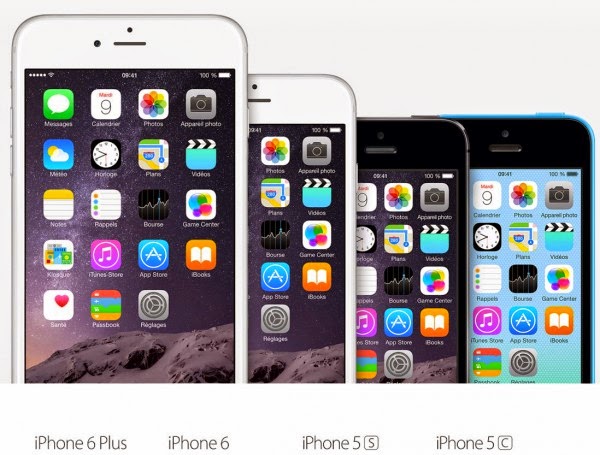Initially distant from the photo (the first model had only a basic item sensor 2 megapixels without autofocus for rotten images), the iPhone, by its popularity and the numerous applications dedicated to the capture and to the sharing of photos, was transformed into compact camera. The question is thus: the iPhone 6 goes t-il to stand out as the best smartphone photo? At first sight, we shout "NO". But when we look at it closer …
The big difference between the iPhone 6 and the iPhone 6 Plus comes from the optical stabilization. The iPhone 6 Plus embarks this famous mobile lens. This stabilization allows to capture photos with a slower exposure time. It is very practical when the light misses. It avoids going up in the ISO and thus degrading the quality of the image. Thus under the even low light, the iPhone 6 Plus will free photos of better quality than the iPhone 6. Why this difference? Officially, Apple evoked the lack of room. Yet, this lack of room comes from the thickness of the telephone, the addition of a lens influencing only on this parameter there. And the thickness of the iPhone 6 measures only 6,9mm. The version "Plus" has a thickness of 7,1mm. Thus the argument is held. But could not Apple really increase by 0,2 mm the size of the iPhone 6, to offer to him(her) this asset(trump card) photoschedules? Either did not the mark want to cannibalize the sales of its jewel?
Photo-Video-Phone
Since then, the mark apple likes the photo / video. It even made the center of its marketing campaign. The following ad moreover received an Emmy Award this year:
A well thought ad it is necessary to admit it, and who highlights the fact that the object the most used by the common run of people to capture small moments of the everyday life is to become the smartphone. While showing him that not, the smartphone is not an object which cuts us and isolates us from the world, but a tool which allows to express itself like a genius of the cinema in everybody's view, to make weep with joy, and to expose immense love to his next one.
It is necessary to admit it, we expected in better! If the iPhone 5s was helped well by its applications, since then, models of smartphones directed photo were born: Nokia Lumia on 1020 and its Pureview system putting KO all other photophones of the market, the LG G3 and its autofocus laser, the Xperia Z2 Sony and its possibilities of videos 4K or in slow dance motion. The sensors of smartphones passed in more than megapixels 8. An important limit. Because 4K who is going to be brought to become more democratic (with an interest a little higher than that of the 3D) requires megapixels 8,3. Other point: the optical stabilization. Inaugurated with Nokia Lumia 925, it re-hangs itself more and more on the models top of the range.
IPhone 6 and iPhone 6 Plus, same sensor, but different optics
The sensor of iPhones 6 and 6 Plus is identical to that of the iPhone 5s: a sensor 8 megapixels with pixels of 1,5 µm. After small calculations, I arrived at a sensor of 1/3″ covering a surface of 4,8 x 3,6 mm.
An optical block in 5/6 elements
The optics of the iPhone 6 is identical to that of the 5s. It offers an opening f / 2.2. That of 6 Plus adds a lens of stabilization carrying the number in 6 elements gathered in a group. It deserves a small comparison:
Nokia Lumia on 1020, reference in the domain, (who offers moreover a sensor 1/1,5" Of 41 million pixels helped by a technology Pureview) have an optics possèdant 6 elements. 5 plastic elements and a glass element. Parmis these 6 elements (distributed in a single group), we find a lens of stabilization. The whole opening to f / 2.2.
The iPhone 6 Plus and the Nokia Lumia 1020 thus embark similar optics containing the same number of lenses. Note that the opening is also identical and opens to f / 2.2.
The treatment of the image realized by the iPhone remains to see. But note that there is an incredible number of applications allowing to take advantage completely of the qualities photo, with the possibility of recording the images in the format TIFF (thus there " lossless "). The question being then: does a file TIFF of the iPhone 6 Plus do better that a file RAW of Nokia on 1020? Difficult to believe considering the precision brought by the system Pureview.



Show EmoticonHide Emoticon